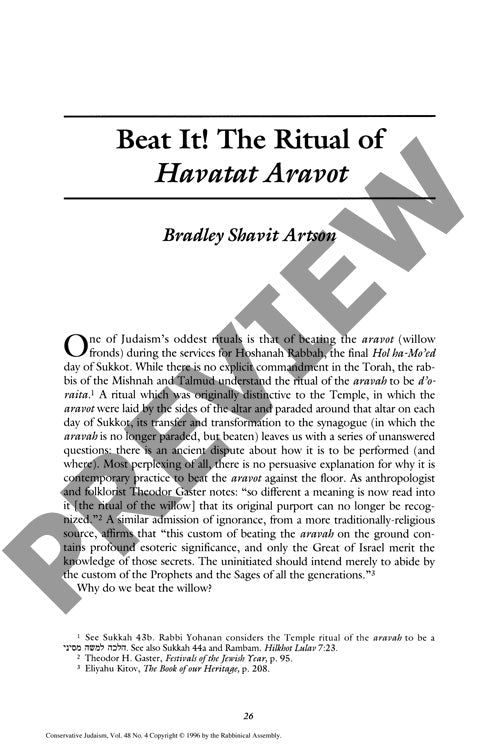Beat It the Ritual of Havatat Aravot
Couldn't load pickup availability
The enigmatic Jewish ritual of beating willow branches (havatat aravot) on Hoshanah Rabbah presents a compelling puzzle in Jewish liturgical practice—how did a Temple-era ceremony involving decorative willow placements transform into the dramatic act of striking branches against the ground? Despite extensive scholarly attention, ancient sources offer surprisingly little clarity: the Mishnah describes beating palm fronds rather than willows, and no early texts explain the ritual's violent character. Through close reading of Mishnaic, Talmudic, and medieval sources, coupled with comparative analysis of interpretive traditions, this research challenges popular symbolic explanations linking the practice to sin, mortality, agricultural fertility, or messianic hopes. These interpretations fail to account for both the ritual's specific timing and its destructive nature. Instead, evidence suggests a more pragmatic origin: the beating serves primarily to render the willow branches ritually unfit (pasul) immediately after their ceremonial use, marking a clear end to the festival. This halakhic explanation aligns with parallel Mishnaic passages on ritual object disposal and reflects rabbinic priorities for legal orderliness. The findings demonstrate how modern psychological and theological frameworks, when projected onto ancient practices, can obscure their original practical functions within Jewish legal discourse.

More Information
-
Physical Description
-
Publication Information
Published 1996
ISBN
-
Publication Credits
Bradley Artson

